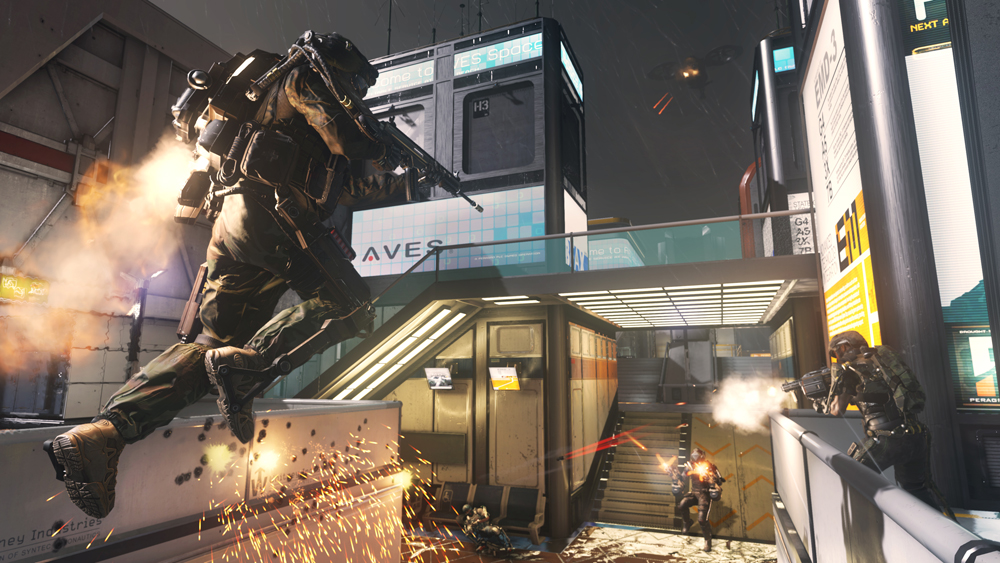While piloting Sledgehammer Games’ vision of a future soldier, I couldn’t shake the thought of The Six Million Dollar Man.
“We can rebuild him. We have the technology. We can make him better than he was. Better … stronger … faster.”
That iconic line, uttered 40 years ago in the opening credits of a sci-fi TV show, could have just as easily been said today of Call of Duty: Advanced Warfare, Sledgehammer Games’ first turn at the helm of Activision’s multibillion-dollar franchise.
You can draw obvious parallels between the two, most notably in the exoskeletons adorning every tech-savvy operator in Advance Warfare. These machine-powered supersoldiers jump higher; they boost, dodge, and slide in every direction; and they deliver life-ending melee blows with sickening pneumatic force.
But that analogy goes a little deeper: Call of Duty: Advanced Warfare is itself a six million dollar man. It’s powered by new-gen technology and Activision’s capabilities to support a new three-year development timeline — it’s Call of Duty, but it’s also a welcome and decidedly different experience. Whether it’s the Sledgehammer thumbprint on the series, the crossroads of technology and added production time, or some combination of it all, Advanced Warfare’s multiplayer is a faster, stronger, and from what I saw, a better experience for it.
During our playtime ripping through multiplayer opponents with future tech across new maps and modes, the obvious emphasis this time around is on mobility, variety, and customization. Much has changed, and some has stayed the same. But in light of today’s full reveal of the multiplayer mode, we’re running through the major points and changes in Advanced Warfare’s multiplayer.
Call of Duty: Advanced Warfare is slated for a Nov. 4 release on Xbox One, PlayStation 4, Xbox 360, PlayStation 3, and PC. Here’s what you need to know.
The exoskeleton
According to Call of Duty: Advanced Warfare, the soldier of the future sports a high-tech, battery-operated exoskeleton (exo) complete with a variety of attachments and functions. These have huge implications in multiplayer, as every player can upgrade every exo with abilities, and these also empower you with unparalleled mobility. Exos by default modify the familiar Call of Duty movement through propulsion boosts.
As your operator hangs in midair after a jump, you can boost up to attain new heights. Or say you’re a sitting duck suspended in a predictable trajectory; now you can boost dash through the air for more speed or back down to the ground when gravity just isn’t working fast enough. Or if you’re in handshake distance, you can employ your exo’s boosts to slam down into your opponent with a crushing airborne melee attack.
Back on the ground, most of that functionality carries over as well: Quick dashes are surprisingly effective in throwing off an opponent’s aim, giving you a precious second to turn the tables. It all adds up to a totally gratifying and fluid movement system that allows you to outmaneuver pursuers, quickly cut objective routes, and generally get creative as second-to-second decisions unfold in the classic Call of Duty multiplayer frenzy.


